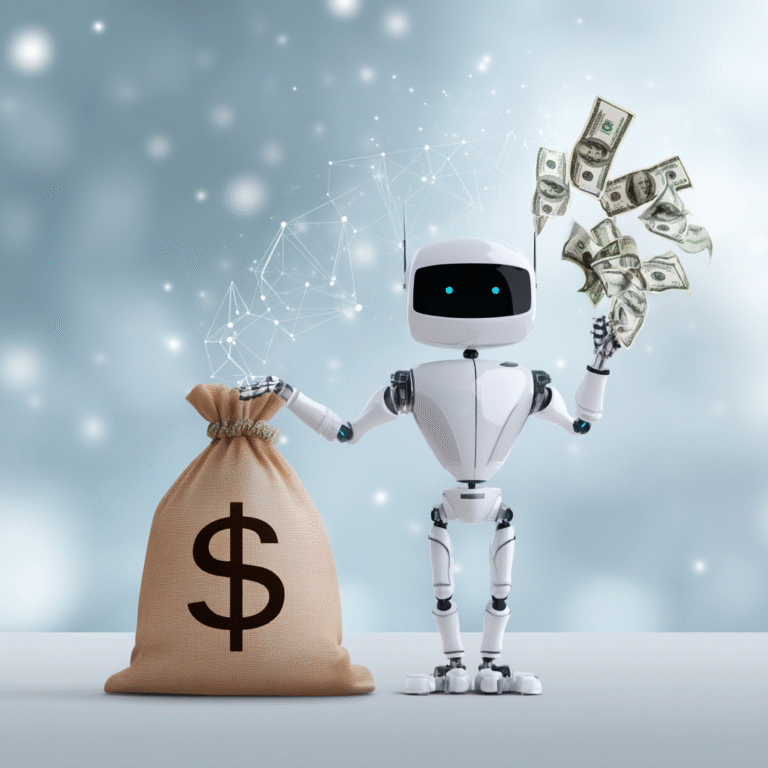AI Magic: Transforming Your Video Production Game (2025 Guide)
Video content isn’t just a part of the internet; it is the internet. From YouTube tutorials to TikTok trends and corporate communications, the global appetite for video is insatiable. Projections show that online video will account for over 82% of all consumer internet traffic in the coming years. For creators and businesses, this represents a massive opportunity, but it also presents a significant challenge.
Traditionally, high-quality video production has been gated by high costs, steep technical learning curves, and time-consuming workflows. But that is changing at lightning speed. Artificial Intelligence is systematically dismantling these barriers, offering a suite of powerful tools that can accelerate every stage of the production pipeline, from the first spark of an idea to the final edit.
This guide will walk you through the new, AI-powered video production workflow. We’ll introduce you to the concept of an “AI Production Studio,” showcase the best-in-class AI tools for scripting, video generation, voiceovers, and editing, and explain how you can leverage this “magic” to create stunning content faster and more affordably than ever before.
The AI Production Studio: Your New Film Crew
The key to understanding AI’s role in video is to stop thinking of it as a single “make a video” button. Instead, view it as your personal, on-demand production crew, with a specialized AI assistant for every job:
- The AI Scriptwriter: Your tireless brainstorming partner and writer.
- The AI Cinematographer: Generates custom B-roll and visual assets from a text prompt.
- The AI Voice Actor: Creates clean, professional voiceovers in any language.
- The AI Composer: Produces royalty-free background music in any genre.
- The AI Editor: Handles tedious editing tasks, freeing you for creative storytelling.
The Core Principle: AI is not here to replace the human creator; it’s here to augment them. Your role as the **Director**—the source of the core idea, the vision, and the final creative judgment—is more important than ever. AI handles the technical execution, so you can focus on the story.
Pre-Production: Ideation & Scripting with AI
A great video starts with a great idea and a solid script. This is often where creators get stuck. AI excels at breaking through this initial friction.
⭐ Pro Prompt: Generating Video Ideas
Use an LLM like ChatGPT or Claude to brainstorm concepts tailored to your niche.
Act as a YouTube content strategist. My channel is about [Your Niche, e.g., 'the history of ancient civilizations'].
Generate 10 engaging video ideas that would appeal to a broad audience. For each idea, provide a catchy, SEO-friendly title and a brief one-sentence hook.⭐ Pro Prompt: Writing the Script
Once you have an idea, the AI can draft a complete, structured script.
Act as an expert scriptwriter for a "docu-style" YouTube video. Write a 1,000-word script for the video titled "The Engineering Genius of the Roman Aqueducts."
The script must have three sections:
1. Introduction: A strong hook that grabs the viewer's attention.
2. Main Body: Explain three key engineering innovations (e.g., the arch, gradient, concrete).
3. Conclusion: Summarize the impact and provide a call to action to subscribe.
Write in a clear, narrative, and authoritative tone.Production: Generating Visuals & Audio with AI
This is where the revolution is most visible. Generating custom assets that used to require animators, stock footage subscriptions, or voice actors can now be done from a text prompt.
-
The AI Cinematographer (Text-to-Video)
As of 2025, tools like OpenAI’s Sora, Runway, and Pika Labs can generate short, high-fidelity video clips from text descriptions. While not yet capable of producing a full-length movie with consistent characters, they are incredibly powerful for creating:
- Custom B-roll footage that perfectly matches your script.
- Abstract and atmospheric background visuals.
- Short, eye-catching clips for social media ads.
-
The AI Voice Actor (Text-to-Speech)
Forget robotic-sounding voiceovers. Platforms like ElevenLabs and Murf.ai use generative AI to produce rich, natural-sounding voices with realistic intonation and emotion. You can clone your own voice or choose from a vast library, making professional narration accessible to everyone.
-
The AI Composer (Text-to-Music)
Finding the right royalty-free music is a common challenge. Tools like Suno or Udio are changing the game by allowing you to generate custom background music from a simple prompt like, “a calm, inspiring corporate lo-fi track” or “an epic, cinematic orchestral score.”
Post-Production: The AI-Assisted Edit
The final stage of editing is often the most time-consuming. AI is now being integrated into editing software to automate the most tedious tasks.
Key AI Editing Features to Look For:
- Text-Based Editing: This is a game-changer. Tools like Descript and Adobe Premiere Pro’s “Text-Based Editing” feature automatically transcribe your video. To edit the video, you simply edit the text document—deleting a sentence in the transcript removes the corresponding video clip.
- AI Audio Enhancement: One-click tools that can remove background noise, level volumes, and make your voiceover sound like it was recorded in a professional studio.
- Auto Re-framing: Automatically converts your horizontal 16:9 video into a vertical 9:16 format for TikTok or Reels, intelligently keeping the subject in the frame.
- Silence Removal: Automatically finds and cuts out awkward pauses and dead air from your footage.
Frequently Asked Questions
What are the current limitations of AI video generators like Sora?
As of mid-2025, the primary limitations are clip length (most tools generate clips under 60 seconds), maintaining perfect character and object consistency across multiple shots, and depicting complex physics or interactions without strange artifacts. They are phenomenal for B-roll and abstract visuals but not yet for creating a full narrative scene with specific actors.
Can I legally use and monetize AI-generated video content on YouTube?
Yes. YouTube’s policies permit AI-generated content, provided it adheres to all community guidelines. They now require creators to disclose when content is significantly modified by AI. As with any content, you are responsible for ensuring you have the rights to all assets (including the AI-generated ones, which depends on the tool’s terms of service) and that your content is original and valuable, not just spammy or auto-generated.
What is the best AI tool to start with for video creation?
A great starting point is to use ChatGPT for your script, a free tool like ElevenLabs for the voiceover, stock footage from Pexels for visuals, and editing it all together in the free version of DaVinci Resolve or Clipchamp. This gives you a complete, professional workflow with a $0 tech stack.




